Is Nothing Sacred?
After the discovery of the contaminated laddus at the Sri Venkateshwara temple in Tirupati, a reassertion of Hindu identity seems inevitable
/wp-content/uploads/2024/09/NothingSacred1.jpg)
The Sri Venkateshwara temple in Tirumala, Andhra Pradesh (Photo: Alamy)
SOCIAL MEDIA PLATFORMS mocked Hinduism after laboratory tests revealed that the cow ghee supplied to the Venkateshwara temple, managed by the Tirumala Tirupati Devasthanams (TTD) in Andhra Pradesh, contained animal products, including beef tallow. Much of the scorn directed at Hindu beliefs came from Hindus themselves, perpetuating a longstanding trend suggesting Hindus are fair game for ridicule. Nothing appears sacred when it comes to India’s majority religion. While it is disheartening to see individuals deride their own faith, seemingly motivated by self-pity or a craving for external validation, routine disrespect for the traditions that have shaped generations of Indians cannot be overlooked. Yet, profanities heaped on Hinduism are seen as business-as-usual.
Let us consider a few of these comments. A well-known X account, @tamilravi, purportedly run by a Dravidian, remarked: “The Tirupati laddu issue cannot be a Hindu problem. The majority of Hindus are meat eaters. If anything, it can only be a vegetarian’s.” Such anti-Hinduism proliferates online and offline. Writer and ‘Indian mythologist’ Devdutt Pattanaik commented on X: “After the announcement of ‘beef adulteration’, did the sales of Tirupati prasad drop? I don’t think so. Hindus are not so easily fooled. No wonder Sanatanis are furious.” His further tirade against Sanatana Dharma, which is Hinduism itself: “In the GoldenAge of India, cow dung was used to plaster the walls and floors of homes. A vegetarian who does not do this today in his flat or bungalow is not a true Sanatani. Right?”
This is hardly surprising in a country dominated by liberal thought that tends to border on the illiberal. Unlike certain other faiths, which might elicit calls for fatwas or other forms of retaliation, these statements are laughed off although they not only offend millions but also undermine the depth and diversity of Hinduism. The prevailing attitude of “get used to the insult” directed towards Hindus has become normalised, stemming from a blend of political correctness and selective outrage evident since the early years of independence.
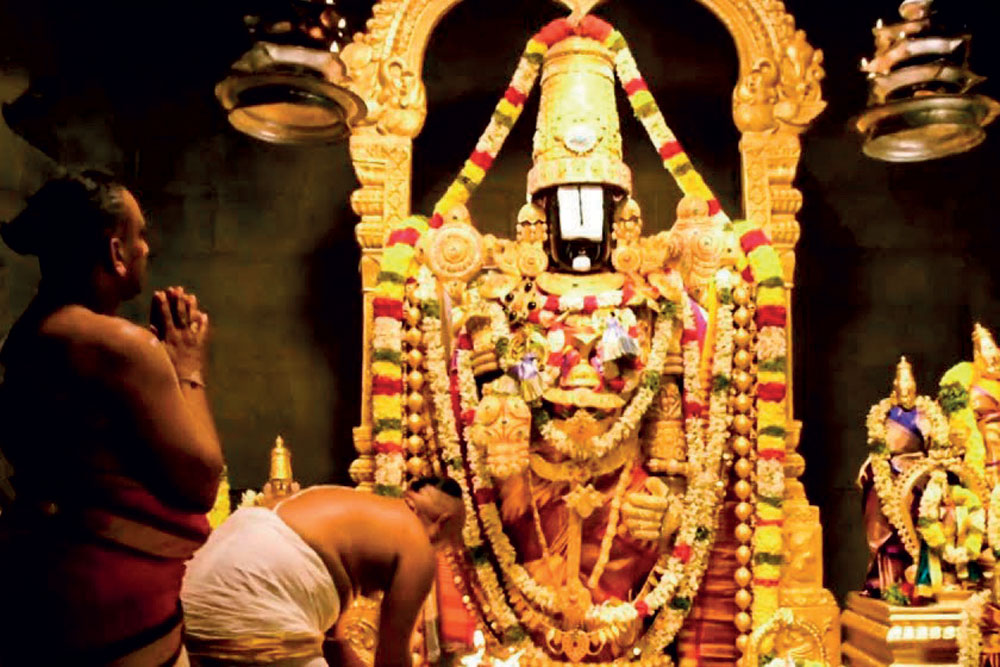
Politicisation of temple management paves the way for mismanagement and corruption. Such systemic control reveals a deeper moral failing: the state’s inability to uphold the sanctity of religious autonomy while selectively targeting Hindu institutions for administrative and financial manipulation
It is undeniable that while other religions often receive immediate protection from criticism, Hinduism is treated as an easy target, with its pluralistic and tolerant nature exploited to allow unrestrained disrespect. This double standard has fostered an environment where belittling Hindu beliefs is not only tolerated but occasionally encouraged under the guise of free speech, leading to an increasing sense of frustration among Hindus who are beginning to assert themselves.
At the heart of this condemnation of the sacred aspects of Hinduism lies the politics of appeasement that originated in the Nehru era and persists today, a process called de-Hinduisation. This entails stripping Hinduism of its dharmic elements—rituals, traditions and symbols—or its deeper meaning in the name of secularism. By undermining these core practices, the spiritual and cultural integrity of the faith has been compromised, reducing it to a shell of its profound philosophy. This very act threatens the resilience and vibrancy of Hinduism, which has thrived for millennia through its rituals that connect individuals to the divine and uphold the principles of dharma. Without these elements, the faith risks losing its identity and strength.
Historically, the last significant assertion of Hindu identity occurred in 1857 during the First War of Independence when Hindu soldiers revolted against the British authorities over the use of grease purportedly derived from cow fat in rifle cartridges. The British had also sought to control Hindu temples. Between 1810 and 1827, the East India Company implemented temple control laws in the Bengal, Madras, and Bombay presidencies. Later, in 1863, following the events of 1857, the British introduced the Religious Endowments Act, transferring temple management to Hindus. However, this arrangement was short-lived.
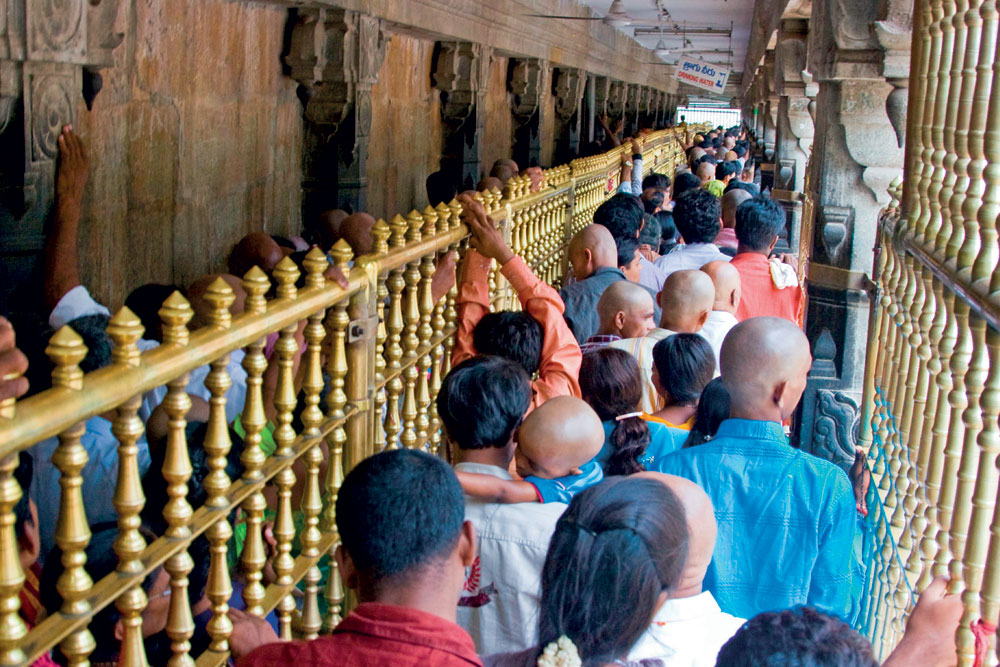
In 1925, the British instituted the Madras Religious Endowments Act, bringing all religious places under their control. While Muslims and Christians protested and regained authority over their places of worship, Hindus remained passive. Consequently, in 1927, the Madras Hindu Religious Endowments Act was enacted, exempting non-Hindu religious places from the previous legislation. But Hindu temples remained under government oversight.
After Independence, some sense prevailed among the new rulers in 1950, as Articles 25 and 26 of the Constitution granted all faiths the freedom to manage their religious spaces. Unfortunately, this euphoria was short-lived too. Like their British counterparts, the rulers of free India also wished to wield power over temples. Successive governments’ attempts to control Hindu temples and their administration reflect a troubling amorality that curtails religious freedom and undermines cultural heritage. While institutions like churches and mosques largely operate autonomously, Hindu temples have often been subjected to stringent state control, with governments overseeing their finances, rituals, and administration. This disproportionate interference not only contravenes the principles of equality and non-discrimination enshrined in the Constitution but also misuses temple resources, occasionally diverting funds meant for religious or charitable purposes towards state projects.

Under Prime Minister Narendra Modi’s leadership, secularism is no longer seen as appeasement of minorities at the expense of the majority Hindu population. Instead, he has emphasised that special privileges or unfair advantages for any faith destroys secularism. By dismantling the longstanding political practice of minority appeasement, Modi has redefined secularism as the fair treatment of all
This state control, often justified as ‘regulation’, deprives Hindu communities of their right to manage their own sacred spaces and belittles their spiritual traditions. The politicisation of temple management paves the way for corruption and mismanagement, eroding the trust of devotees. Such systemic control reveals a deeper moral failing: the state’s inability to uphold the sanctity of religious autonomy while selectively targeting Hindu institutions for financial and administrative manipulation.
As things happened, in 1951, the Madras state government enacted the Madras Hindu Religious and Charitable Endowments Act, effectively seizing Hindu temples. This move was promptly challenged in the Supreme Court which, in the 1954 Shirur Mutt case (Shirur Mutt vs The Commissioner, Hindu Religious Endowments, Madras), ruled in favour of protecting the independence of religious institutions, allowing them to govern their affairs as long as they did not violate public order, morality, or health. The ruling clarified the rights of religious denominations to manage their property and practise their faith freely, establishing key precedents for safeguarding religious freedoms and property rights in India.
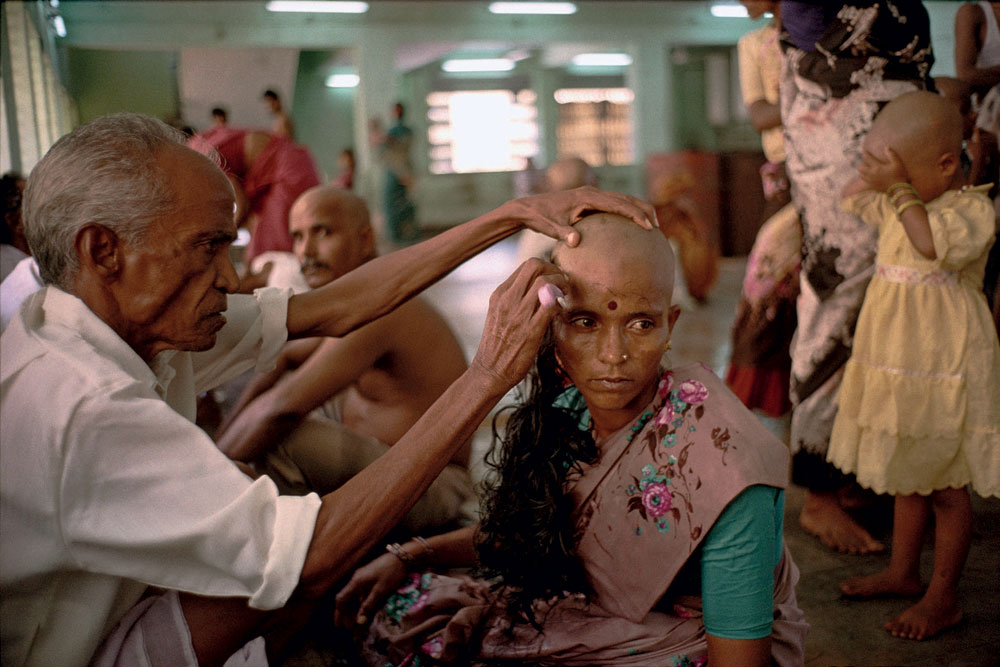
However, the Congress government led by K Kamaraj rejected the ruling and filed a review petition. In 1959, the Kamaraj government introduced the Tamil Nadu Hindu Religious and Charitable Endowments Act, reinstating sections deemed unconstitutional by the Supreme Court. Soon, other Indian states adopted the Tamil Nadu model, resulting in over four lakh temples falling under government control.
To summarise, it was during British rule and later under Jawaharlal Nehru and Congress, aided by leftist historians and intellectuals, that a de-Hinduisation project was implemented. Many of them wrote tirelessly that Hindus and Hindu places of worship were unhurt under Mughal rule and under other invaders although there is enough evidence to suggest otherwise. As it happens, the intellectual currents that challenge this marginalisation of the Hindu faith, aiming for a contrived outreach to Abrahamic faiths in India, were championed by figures like Swami Vivekananda, Sri Aurobindo, and Bankim Chandra Chatterjee. It is noteworthy that Nehru, as the first prime minister, distanced himself from the inauguration of the Somnath temple in Gujarat in May 1951, even urging President Rajendra Prasad to refrain from attending. Nehru wrote to Prasad, “My dear Rajendra Babu, I confess that I do not like the idea of your associating yourself with a spectacular opening of the Somnath Temple. This is not merely visiting a temple, which can certainly be done by you or anyone else, but rather participating in a significant function which unfortunately has a number of implications.” Nonetheless, Prasad inaugurated the temple, respecting the sentiments of millions of Hindus and not wishing to decline the invitation from those who had rebuilt a site repeatedly vandalised and looted over centuries.
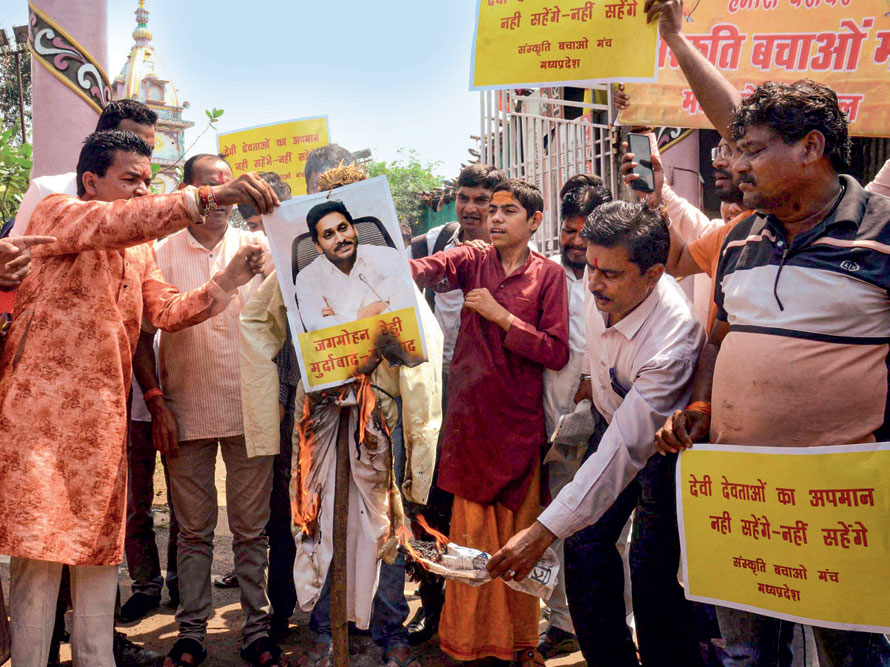
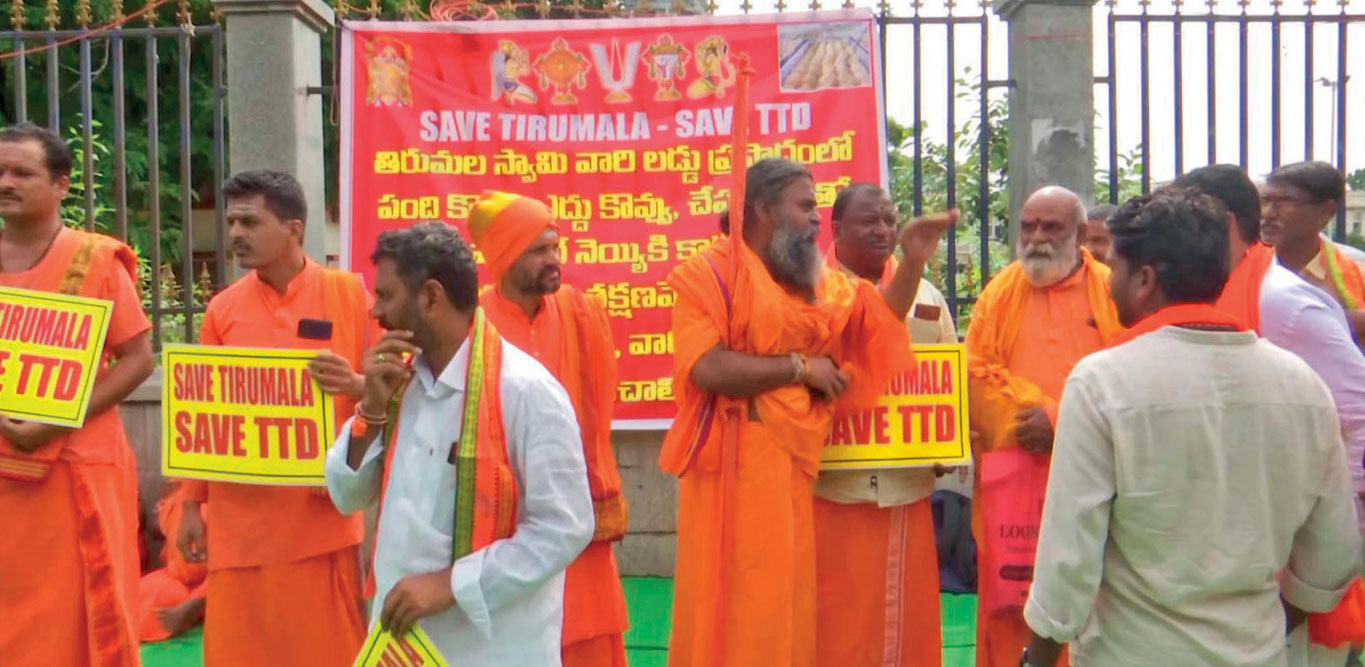
DESPITE THE PROLONGED APATHY from the Congress and coalition governments, movements and individuals advocating for the civilisational restoration of India began to surface, particularly since the 1980s, with the Vishva Hindu Parishad (VHP) and other nationalist Hindu organisations leading the Ayodhya temple movement. We all know the outcomes of this Hindu resurgence.
The next significant phase in rectifying the de-Hinduisation process began under Prime Minister Narendra Modi in 2014. It is noteworthy to recall what the leader of the Ayodhya movement, Ashok Singhal, had said about Modi in 2013. He referred to Modi as a “divine creation”, asserting that Modi had emerged following the tragic events when Ram bhakts were burnt and the developments in the subsequent 72 hours. He described Modi as “the gift of Lord Ram”, stating that the “media, Sonia Gandhi, Western powers have all attacked him. But he is invincible.”
As prime minister, Modi began by rejecting the minority appeasement policies adopted by most previous governments and unapologetically embarked on a project to re-emphasise the cultural and social significance of Hinduism—considered unthinkable by any government before his tenure. He positioned himself as a leader committed to reclaiming the cultural, social, and historical losses incurred by Hindus over centuries. He has reinvigorated pride in Hindu identity, addressing issues long overlooked in India’s political narrative. Initiatives like the restoration of temples, the construction of the Ram Mandir in Ayodhya, and the recognition of Hindu festivals and traditions on national and global platforms have empowered Hindus.

Andhra Pradesh Chief Minister N Chandrababu Naidu has been projected as a sinner of sorts by some commentators. He is being attacked for aiding the ‘divisive politics’ of the ruling party at the Centre. For them, what Naidu is engaged in is ‘overreaction’ and ‘overkill’
By nearly obliterating the narrative that associates Hindu identity with a lack of modernity, Modi has encouraged Hindus to embrace their faith with confidence. His approach to addressing historical injustices reflects a shift towards celebrating the richness of Hindu traditions, aiming for a future where Hinduism is respected and revered globally. This movement represents a vital resurgence of pride in being Hindu, urging believers to celebrate their faith without hesitation.
The political dynamics in India, particularly with Modi at the helm, signify a departure from the era of de-Hinduisation. This shift carries the promise of restoring Hindu traditions and spirituality to their rightful place, and reclaiming the narrative that has long been distorted by years of selective retelling.
Under Modi, there is no scope for emotional manipulation of Hindus, what is called guilt-tripping. It was no longer a virtue to sound un-Hindu to appear secular or respectful towards other religions. The mindset has changed since Modi’s rise in national politics.
Modi has rejected the notion that preferential treatment of other religions is the cornerstone of secularism by promoting a more balanced and inclusive approach that upholds the equality for all faiths without pandering to any one community. Under his leadership, secularism is no longer seen as appeasement of minorities at the expense of the majority Hindu population. Instead, Modi has emphasised that special privileges or unfair advantages for any faith destroys secularism. By dismantling the longstanding political practice of minority appeasement, particularly through reforms like ending the special status of Jammu & Kashmir (Article 370) and advocating for a Uniform Civil Code, Modi has redefined secularism as the fair treatment of all, rather than the selective accommodation of a few. His vision aligns with the idea that Indian secularism should not undermine the rights and aspirations of the Hindu majority. This shift has resonated with many Hindus who felt marginalised under older interpretations of secularism that often prioritised other faiths.
This revival is a crucial moment in the ongoing struggle for recognition and empowerment of Hinduism as it seeks to reshape the perception of Hindu identity and offer a renewed sense of pride to millions.
The Tirupati laddu issue highlights the double standards of secularists who often remain silent or indifferent when Hindu traditions practices are questioned or commercialised. The controversy about the iconic laddu, a revered offering in the temple, exposes how Hindu customs can be trivialised without drawing the same level of outrage seen in cases involving other religions. This selective approach underscores a deeper bias in the name of secularism.
It is in this context that leaders like Andhra Pradesh Chief Minister N Chandrababu Naidu deserve praise. Naidu’s efforts to protect and promote Hindu religious heritage, such as through temple development and safeguarding rituals, signal a much-needed shift towards restoring pride in Hindu customs. By standing up for Hindu interests without fear of being labelled ‘non-secular’, Naidu exemplifies leadership that respects India’s cultural diversity while ensuring Hinduism is not marginalised.
However, he has been projected as a sinner of sorts by a section of the commentariat. They are encouraging their friends in the media and academia to unleash a ruthless attack on the chief minister for aiding the “divisive politics” of the ruling party at the Centre. For them, what Naidu is engaged in is “overreaction” and “overkill”. Among them are people who wear tights and visit Sufi shrines while masking themselves with headscarves produced promptly from their vanity bags. That is considered ‘cool’. Many of them are self-loathing Hindus who revel in claims like “I have never been to a temple” and “I have never attended a Satsang”. Among them are those who despise the Kanwariyas and disdain Hinduism, despite being born into the religion.
The only thing Naidu did was raise concerns about the quality of the laddus under the previous Jagan Mohan Reddy government of the YSR Congress Party (YSRCP). “We are forming a Special Investigation Team (SIT) comprising officers of IGP rank and above. The SIT will submit a report to the government, and we will take action based on that report so that such things are not repeated,” Naidu has said about the reported adulteration of the laddus supplied to the Tirupati temple, which attracts close to 25 million devotees annually.
The developments around the Sri Venkateshwara Swami temple in the Tirumala hills of Tirupati, which has now undergone a “ritualistic sanitation” following reported sacrilege, bring to the fore several other key questions.
Are places of worship controlled by state governments? Yes, in the case of Hindus, but not for others. Can more places of worship be brought under government control? Yes, in the case of Hindus alone. Do state governments manage administration in places of worship, including rituals? Yes, in the case of Hindus alone. Can the government dispose of assets at places of worship? Yes, if they are Hindu. Do practitioners have a say in the management of places of worship? Not in the case of Hindus, while other religions enjoy such rights. Is income from places of worship taxed? Yes, in the case of Hindus.
Those who are now being called out are those who make anti- Hindu statements from a position of privilege that Hinduism itself offers. The hypocrisy of casting aspersions on Hinduism often manifests in the selective critique of its practices while remaining silent on or supportive of similar or more controversial aspects of other religions. This double standard reveals a bias now clear for all to see.

/wp-content/uploads/2024/11/Cover-ModiFaith.jpg)









/wp-content/uploads/2024/11/Defender1.jpg)
/wp-content/uploads/2024/11/ALoser.jpg)
/wp-content/uploads/2024/11/APassagefromIndia1.jpg)

More Columns
Madan Mohan’s Legacy Kaveree Bamzai
Cult Movies Meet Cool Tech Kaveree Bamzai
Memories of a Fall Nandini Nair